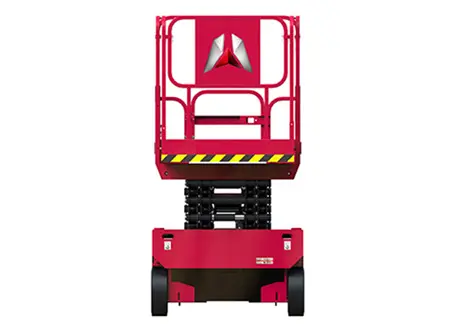Choosing the Right Scissor Lifts for Your Job
Scissor lifts are material handling solutions designed for lifting loads in industrial environments. The lifts are available in a variety of configurations, both fixed and mobile, with fixed, adjustable, or rotating load platforms. The range of configurations gives scissor lifts a wide range of versatility.
Before choosing the right scissor lift, you need to consider some of the most important factors before deciding which scissor lift you want to use. Next, the scissor lift supplier will share the following content with you.
1. Working height
It may seem obvious, but how much height do you need to get close to the area you are working on? If you are looking for a scissor lift, then the project you will be working on will essentially require some additional height.
You will need to roughly measure the height and it is important to know that there are two types of heights used in the market when you rent a scissor lift; platform height and working height and the confusion between the two can cause problems. This is the difference between platform height and working height.
Platform Height
Platform height is the vertical distance between the ground where the scissor lift will stand and the floor of the platform where the operator will stand. Therefore, you will get the height from the ground to the height that the platform will be raised.
Working Height
Considering that a person standing on a platform is approximately six feet tall, some rental companies are using working height instead of platform height, which is usually about six feet higher than the height of the platform. When you choose a scissor lift, it's important to understand the difference between platform height and working height because you don't want to end up at the wrong working height, which could put you a few feet from where you need to be. Basically, scissor lifts can reach heights of 19 to 40 feet.
2. Weight capacity
Now that you know how high you want the scissor lift to lift you, now is a good time to give a lot of thought to capacity. Any time you want to lift workers and their tools and equipment, there are capacity limits and they must be carefully adhered to for the safety of the souls involved in the field. Before deciding on a load-bearing capacity, you should know something about your project. You should be clear about how much weight you want to lift. Guessing when renting a scissor lift can cause delays in your project if you end up needing a new powerful scissor lift when you are on the job. Yes, you can change the scissor lift, but you don't want to choose one and make the change the next day.
You should have a weight list of staff, equipment, and tools on the scissor lift platform. In some cases, estimates may be allowed, but your goal should be to have an accurate number. You must ensure that you do not push the capacity of the scissor lift to its limits.
3. Weight capacity and maximum number of people
In addition to limiting the capacity of the scissor lift, there will be personnel limitations regardless of weight. Even if the capacity is higher than your project needs. This may mean that you need to modify your work plan and instead of performing many different parts at the same time, you may need to allocate time to ensure that the personnel limit is not exceeded. Spending more time is a good investment in ensuring the safety of your staff.
Typically, a scissor lift has a higher load capacity than a lifting arm lift because a scissor lift rises in a straight line rather than outward. Depending on whether a narrow platform scissor or wide platform scissor lift is selected, the load capacity can range from 500 lbs. to 2,500 lbs.






